




Through a student’s survey, the report highlights the current scenario of STEM Education in Senior School Education System in India.
The study explores the following areas: the gaps in the STEM education system compared to international education; challenges faced by students; drivers for choosing an institute for higher education; and perspectives on exchange programs, subject preferences, and future technical skills.

Cyient is focusing on digital transformation and updating its offerings in the New Normal, anticipating demand for AI based inspection, Cloud based migrations, AR/VR based collaboration tools etc.
Much before the pandemic struck, Cyient realised the need to keep its workforce relevant by reskilling.
Cyient utilised the pandemic to pivot to digital projects by reskilling its workforce. It is also looking at hiring gig-workers to bring flexibility in its business model.
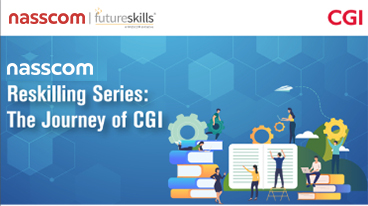
Much before accelerated the process of digital transformation, there was a company that embraced open source, recognised the power of collaboration,
leveraged ecosystems, and built digital competence across a 15,000-member workforce with tangible ROI. CGI, a front runner in the IT and business consulting services market, supports the professional development of its workforce in the Asia Pacific (APAC) region to provide clients with the “best of the best” of talent and expertise.

With a plethora of courses available on the Internet, ranging from 2 hours to 2 months, how do you choose the right course that covers all popular topics, fundamental concepts along with hands on knowledge of most popular tools/ languages.
By working with the IT-ITeS Industry, SSC nasscom has built standards at the fundamental that you must be aware of before taking up a given job role or skill-set.
Through FutureSkills portal you have a choice of courses curated to meet the requirements of the Foundation curriculum. Completion of the course prepares you for SSC Foundation assessment and certification which is a standard assessment for the IT-BPM industry to assess candidates on key skills that are relevant.
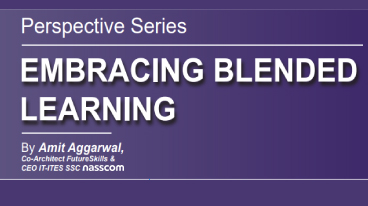
If somebody had told you even one year back that the physical environment in which learning takes place would be replaced by the virtual world, you would have certainly laughed it off. .
Our regulatory framework was a big roadblock that did not consider online learning at par with physical teaching
All this has begun to change, and as it does, a new dawn is going to be ushered into education and training. If you swim with the tide, it will be an exhilarating journey. What are some of the trends that are going to shape the future of education and training? Read more in this FutureSkills white paper, “The Shape of Education and Training to Come”
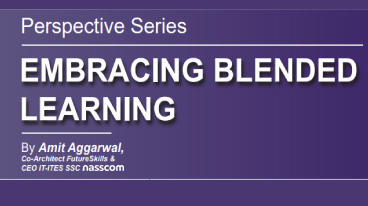
Change is the only thing that is constant. Yet, change is dreaded. The reason is perhaps the fear of the unknown and desire to hold on to the comfort of status quo.
So talk of learning moving online due to technological advancements and now accelerating due to the current crisis might make some believe that the role of teachers would become insignificant or even redundant. But that is far from the truth.
Read this piece by Amit Aggarwal, CEO SSC nasscom, on how the role of the teacher would be enhanced and become even more important with the advent of new models of learning.

The Solution to any problem can be found by simply ‘Googling’ these days. But the results need not align with the purpose of the searcher every time due the presence of massive content on the internet.
‘Information obesity’ brings upon a challenge of picking up relevant pieces of content which an organization may be looking for.Organizations face hurdles in creating content due to many factors, including the huge amount of time it may take. Can there be an alternative or easier method to serve their purpose? Read this piece by Venkatraman Umakanth, Member Success Lead- FutureSkills on the challenges faced by organizations while researching for creating content and the ways to tackle the problem. This is a part of nasscom FutureSkills Perspective Series
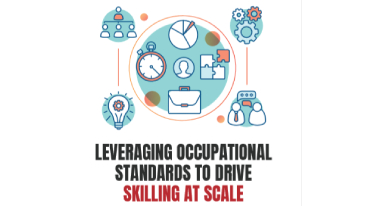
Have you ever wondered why all keyboards are QWERTY Keyboards? There was a time when all typewriter manufacturers had their own special formats. At some point, companies started aligning to the QWERTY keyboard.
As a result, all typists needed to operate on just one keyboard, getting trained became cheaper and easier, increasing the productivity.The list of the transformational impact of standards is long. In India, the framework of creating and using occupational standards has been set up and follows some of the best. practices from across the world.
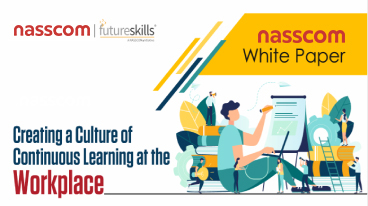
India is facing a severe shortage of skilled workforce and embracing the culture of continuous learning is the need of the hour. The mantra for today is - Learn, unlearn, relearn, and repeat.
Continuous learning at the workplace can deliver the competitive edge organizations require for tomorrow. It is imperative for organizations to invest in L&D programmes and put in place metrics to measure ROI or effectiveness. This white paper explores some of the challenges and best practices when it comes to creating the required learning experiences for employees.
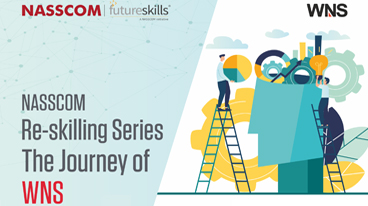
As WNS continues to progress in its digital transformation journey with an unwavering focus on its talent capabilities - which the company believes is a key element in its success.
The nasscom re-skilling series explores WNS's proven re-skilling mantras and the factors that make the company's digital transformation journey unique. WNS aims to re-skill about 30%of its workforce (~20,000 employees) over the next three years through a structured digital education program. Its approach to re-skilling and digital talent development is strategically customized, with the magnitude of focus changing with horizontal and vertical requirements.
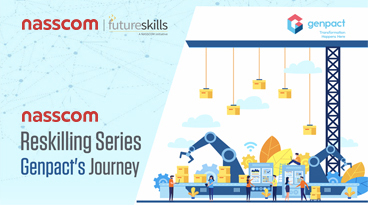
Digital technologies are revolutionizing competitive dynamics across industries and the right partnerships are crucial to make game-changing impact.
The BPM industry has been thought of as the back-office of the world, doing necessary but unimaginative work. However, it has reimagined itself today, as technology changes the way we look at the world around us. From performing repeatable tasks to re-engineering processes to now transforming the end customer experience, BPM has had a fascinating evolution.
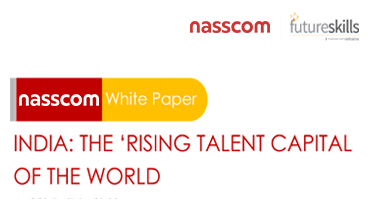
India is poised to become the ‘talent capital of the world’ with an uninterrupted economic growth.
But how well has the country fared in developing her human capital.India ranked 103 out of 130 countries in the Global Human Capital Report 2017 (an Index that measures the preparedness of a nation's talent to contribute to economic growth and productivity)2. To top it, according to the World Bank3, automation threatens 69% of the jobs inIndia and the country has a time window of two to three years, to bring about large-scale reskilling reforms.

No force can stop India’s labour force from driving country’s economic transformation, if it has the right set of skills to thrive in this technological revolution.
We have already come a long way in reshaping our workforce.The country boasts a digitally skilled employee base that accounts for approximately 75% of the global digital talent*. A large share of this success can be attributed to our IT industry, which has been actively working on re-engineering its 3.9 million-strong human resource base to meet the demands of a fast-transforming marketplace.
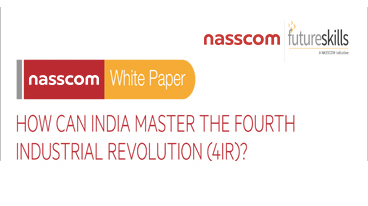
The insdustrial revolutions have been one of the most significant 'game-changuing' periods in Indian history.
Each of them have opened the country to new technologies,new style of thinking, new jobs and opportunities.India had resounding success as a textile manufacturing nation in the first industrial revolution. Asia;s first ever steam-powered cotton mill in the country made the Indian textile industryinternationally cometitve.

Advancement in technology is creating tremendous value for companies in the BPM space. Nasscom believes that the Indian BPM is positioned strongly to get the most out of this opportunity set.
The industry is offering end-to-end digital solutions, boosting its profitability and competitiveness.The sector continues to be the largest in the world, generating revenues close to $32.5bn with an employee strength of 1.2 million. The future is promising too as the sector is expected to become worth $50-$55 billion by 2025.

Nowhere is the impact of the shifting digital landscape as visible as in India’s large IT services organisations that work with all the leading companies around the globe.
The pace and scale of digital disruption is compelling the Indian IT industry, to evolve talent development models in parallel to the changing business models. Through this reskilling series, nasscom explores how Wipro is driving learning transformation in the digitally transforming world.

The Indian tech-force has indeed become one of the most essential levers of the country’s economic well-being.
However, has the IT-BPM sector utilized both male and female talent to the fullest and equally Or is the tech-world still just a man's world? Being relatively new, the sector has been able to implement forward-thinking initiatives and policies, and foster working cultures which has enabled both, attraction and retention of female talent. Women thus form a substantial portion of the IT-BPM sector, with a 35% share, which adds up to about 1.4 million1.
